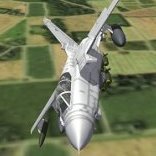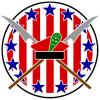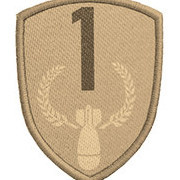Vultee P-34A Victor - 48th Pursuit Squadron, United States Army Air Corps, 1941
After American Airlines expressed serious interest in their six-passenger V-1 design, Gerard "Jerry" Vultee and Vance Breese formed the Airplane Development Corporation in early 1932 but all 500 shares of stock in the company were soon acquired by Errett Lobban Cord to create the Airplane Development Corporation (a Cord subsidiary) as part of the larger AVCO group. On January 1st 1936 the Vultee Aircraft Division became an autonomous subsidiary of AVCO with Jerry Vultee becoming vice president and chief engineer. Vultee and Breese had redesigned the V-1 to beome the eight-passenger V-1A but whilst American Airlines bought 11 V-1A's the aircraft ultimately failed due to safety concerns about it's single-engine in the new era of twin-engine Douglas DC-2's and DC-3's.
Vultee redesigned the V-1 into the V-11 attack aircraft for the United States Army Air Corps but it only received lukewarm interest so, in 1937, he turned his attention to the design and production of a monoplane fighter for the United States Army Air Corps and for possible export orders. By the Spring of 1937 Vultee's fighter design had evolved into a low-wing monoplane featuring a welded steel tube fuselage structure partially fabric covered and with fabric covered flight control surfaces. Powered by the Wright R-1820 Cyclone 9 radial engine, Vultee's design was thoroughly modern in having a fully enclosed cockpit. But, rather conservatively, Vultee chose a fixed (spatted) undercarriage although this was at a time when the United States Army Air Corps was still equipped with open cockpit biplanes. Vultee gambled on his design being relatively inexpensive, sturdy and quick to produce and with war clouds looming the design soon attracted the full interest of the United States Army Air Corps and in September 1937 funds were allocated for Vultee's design to be produced for evaluation as the XP-34.
On January 29, 1938 tragedy struck when Jerry Vultee and his wife Sylvia died when the plane he was piloting crashed in a snowstorm near Sedona, Arizona. AVCO hired Dick Palmer (from Hughes) to take Jerry Vultee's place and the Vultee Aircraft Division performed miracles in pressing ahead with the XP-34 whilst concurrently working on the BT-13, BT-15, and SNV Valiant trainers as well as the V-72 Vengeance. A successful first flight took place on March 31st, 1938 and further testing showed the XP-34 to be tough and manoeuvrable but slower than most contemporary fighters and especially when compared to the new breed of monoplane fighters with retractable undercarriages. Nevertheless, a production order for 300 P-34A's was received and Vultee showed a flair for innovation in becoming the first company to build aircraft on a powered assembly line.
Entering service in August 1939 with the 48th Pursuit Squadron as part of the 15th Pursuit Group based at the newly completed Hickam Field on Hawaii the unit enjoyed a quiet period of conversion to the new type which came to an abrupt end on December 7th 1941 when the Imperial Japanese Navy attacked Pearl Harbor. One element of the first wave of attacking Japanese aircraft, consisting of 43 Mitsubishi A6M "Zero" fighters, bombed and strafed Hickam in an attempt to eliminate air opposition and thus prevent U.S. planes from following them back to their aircraft carriers. Hickam Field suffered extensive damage and aircraft losses but Lt. Secombe of the 48th Pursuit Squadron found an intact P-34A and bravely took off alone in a desperate attempt to defend Hickam Field from further damage. Lt. Secombe engaged 3 Mitsubishi A6M Zero fighters and managed to shoot down one Zero before being overwhelmed by more Japanese fighters and, with his P-34A badly damaged, Lt. Secombe returned to Hickam Field to make an emergency landing between bomb craters.















